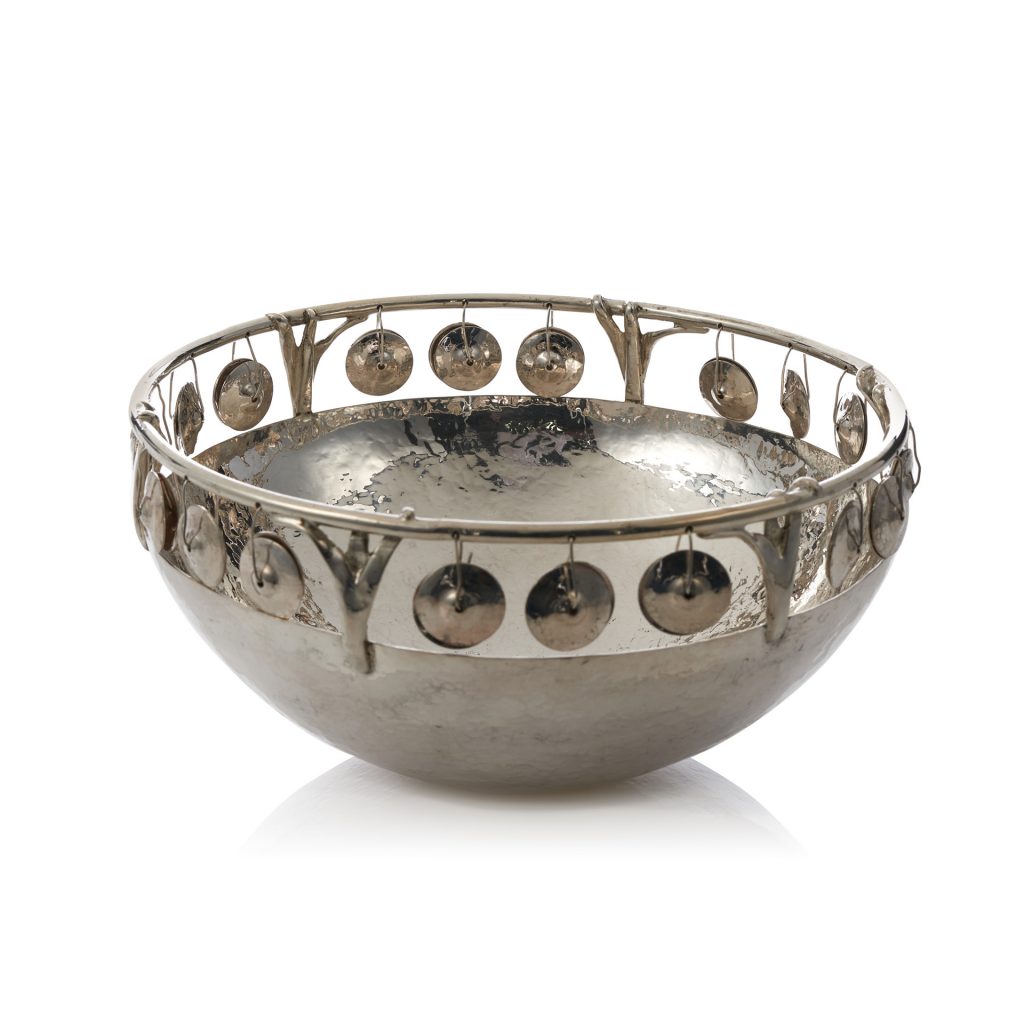Amy Reichert (b. 1959)
Miriam’s Cup I, 1997
Cast hand-hammered sterling silver
Museum Collection
Must Know
Miriam’s Cup is one of the first pieces of Judaica created by Amy Reichert, an architect and exhibition designer.
Exploring her own spiritual connection to Miriam and Jewish women’s ritual, the artist originally created the work for a ground breaking 1997 exhibit of Miriam’s cups by Jewish women artists. Reichert created Miriam’s cup to be placed on the seder table beside the Cup of Elijah as a symbol of Miriam as a source of sustenance and spirit for the Jewish people.
During the seder, each participant drinks “living waters” (mayim hayim) from the Miriam’s cup after the recitation of a set of prayers devoted to her. Miriam’s Cup is a modern ritual object (late 1980s) symbolizing Miriam’s well, which is placed on the Passover Seder table and filled with water. The goblet reminds us of Jewish women whose stories have been sparingly told. Reichert’s cup incorporates the tambourine motif associated with Miriam who led the women in song and dance as they left Egypt.
More Info
Miriam who safely placed Moses in a basket and sent him down the Nile river to be discovered by Pharaoh’s daughter, was, throughout her life, associated with water. She led women in singing and dancing at the crossing of the Red Sea as they were led out of Egypt, and provided the Israelites with a miraculous “well” of water that followed her in the desert, drying up only when she died.
Putting a Miriam’s Cup on your table is a way of making your seder more inclusive and to use the seder as a forum to evoke questions and to engage. We place Miriam’s goblet on the Seder table to remind us, of Jewish women, whose stories have been too sparingly told. This cup is a restless vessel, like Miriam’s ancient well dancing with the people of Israel at the Red Sea. It is heard as well as seen, the cymbals ornamenting the bowl’s perimeter respond to the slightest vibration of the table. On the seder table, it echoes the sounds of freedom—the wind rustling through grasses, the murmuring of exiles, a joyous song with a tambourine.
It reminds us of 3 aspects of Miriam: the bowl is a reflective hemisphere, technically ‘bottomless”, recalling the bottomless well of living waters associated with her. The thin reeds supporting the bowl’s rim remind us of Miriam’s role in rescuing Moses from his basket of bulrushes along the reeds of the Nile. And last, the cymbals make this an instrument, playable by anyone who takes the leap.

